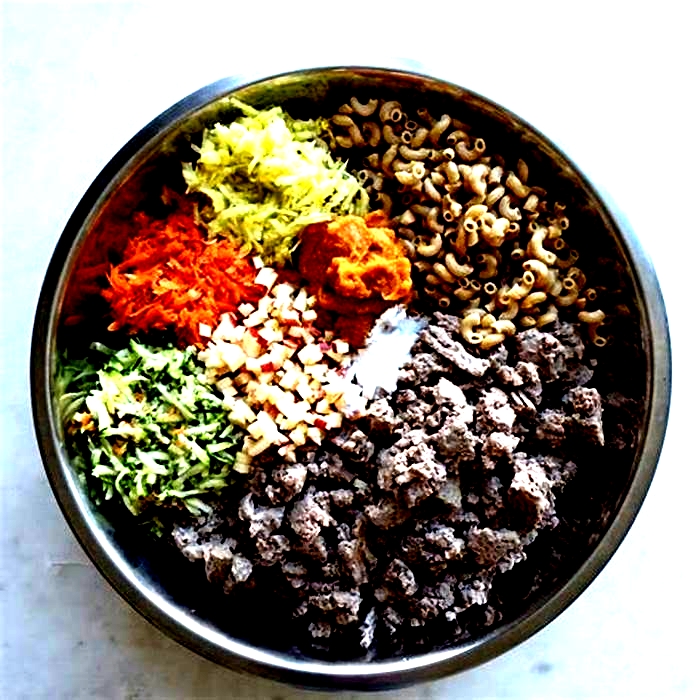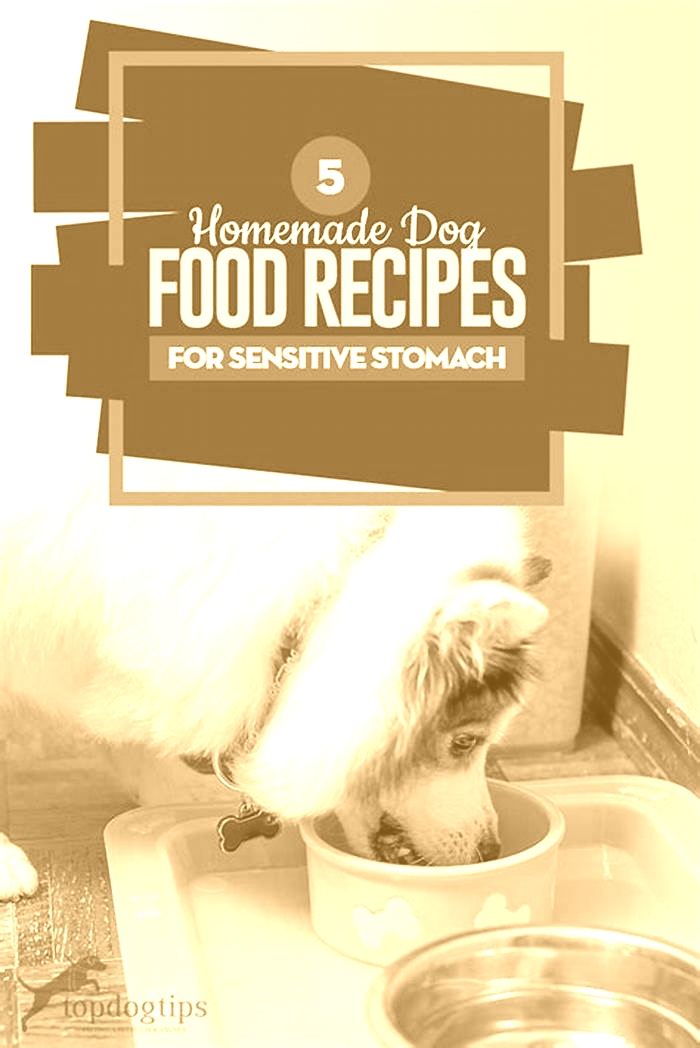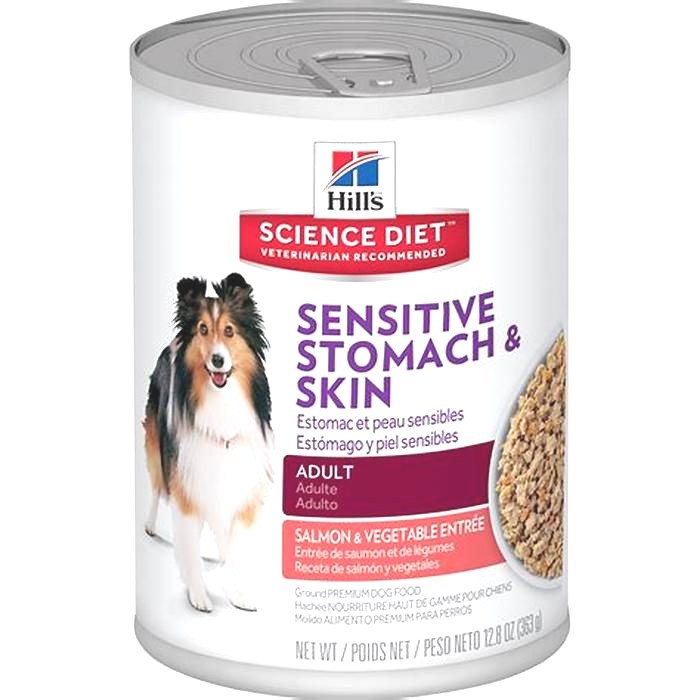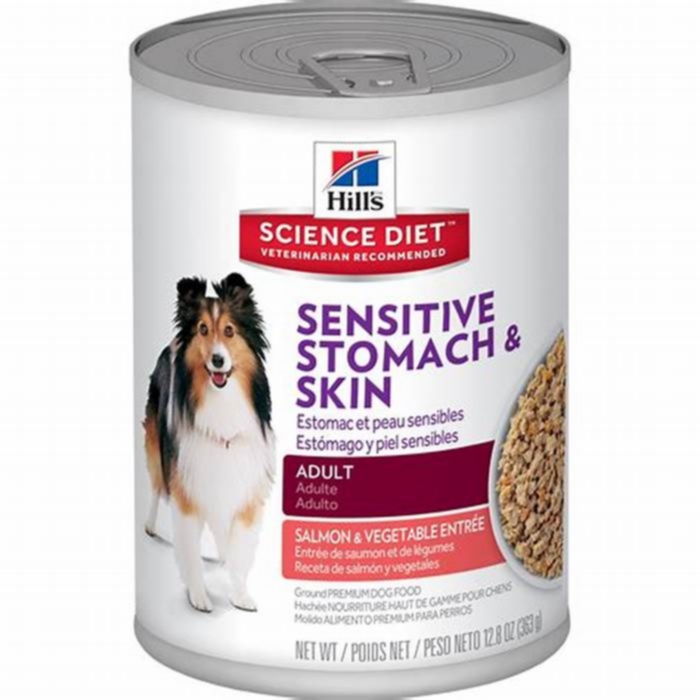homemade dog food recipes sensitive stomach

5 Homemade Dog Food for Sensitive Stomachs Recipes
Looking for the best homemade dog food for sensitive stomachs?
We know it can be challenging, especially since most commercial dog foods are likely to trigger health problems in these dogs and usually upset their stomachs.
As an alternative to store-bought dog food for sensitive stomachs, you can prepare your own homemade meals, either daily or once a week (and freeze or refrigerate them).
We've published many dog food recipes before, and while some of them may be a good option for your problematic pup, many won't.
I've searched a list and found the five best homemade dog food for sensitive stomach recipes that will likely work for most canines.
Some meals should be served in multiple, smaller portions, or they can upset your dogs stomach.
The daily serving size for dogs with sensitive stomachs should be 1 cup for every 25 pounds of weight per day, spread across multiple meals.
If none of these meet your pet's needs, I recommend you also check out Samantha's homemade dog food recipes for sensitive stomach, digestive disorders, and stomach upset.
She's published a few of those, but these five are my favorites:
The good thing about making DIY meals for your dog is that you can make adjustments.
If you see some ingredient that you know won't work for your pup, you can make a substitution here's Samantha's article on how to do this right.
And finally, remember that every dog is different, and these may not be well-balanced for your specific canine.
Discuss these recipes with a veterinarian before preparing them regularly.

ALSO READ:Vet's Guide on Buying and Using Dog Food for Sensitive Stomachs
The 5 Homemade Dog Food for Sensitive Stomachs Recipes

Homemade Dog Food for Sensitive Stomachs: White Rice and Chicken Recipe
Ingredients
- 2 cups of white rice
- 1 pounds of chopped chicken meat
- 1 cups of vegetable mix
- 4 cups of water.
Preparation
First, heat a big skillet and add rice, meat, vegetables, and water to it. Cook it on medium heat until the mixture boils.
Then cover the skillet and let it simmer for about 15 minutes to cook all the ingredients properly, especially the white rice.
This is a straightforward recipe that suits dogs with sensitive tummies since both chicken and rice have a calming effect.

Homemade Dog Food for Sensitive Stomachs: Hamburger Meal
Ingredients
- 1 cup of hamburger meat
- 1 tbsp. of canola oil
- cup of cooked oatmeal
- 2 hard-boiled eggs
- 2 tbsp. of cottage cheese
- 3 tbsp. of beans
- 3 tbsp. of carrots
Preparation
First, fry the hamburger meat in a skillet in canola oil.
When the meat is fried, add finely chopped hard-boiled eggs.
Then add all the other ingredients to the mix and wait for it to cool down.
Oats are a great addition to this meal because they are nutritious.
And while dogs dont usually care for them, they will gobble this meal up because of the hamburger meat.

Homemade Dog Food for Sensitive Stomachs: Chicken with Rice and Pumpkin
Ingredients
- 1 cups of white rice
- cup of chicken breasts (skinless, boneless)
- cup of plain yogurt
- cup of canned pumpkin
- cup of vegetable mix (optional)
Preparation
Cook white rice according to the instructions on the box.
Put the chicken breasts in a large pot, cover them with water, and boil over medium heat.
Shred the chicken into pieces and mix it well with the remaining ingredients in a medium-sized bowl.
This is a simple recipe for bland food that is easy to digest.
Yogurt can soothe the inflamed stomach, while canned pumpkin can help make your dogs bowel movements regular and firm up his stool because it is rich in fiber.

Homemade Dog Food for Sensitive Stomachs: Chicken with Mashed Potatoes
Ingredients
- 1 tablespoons of cottage cheese
- pound of minced chicken meat
- cup of grated carrots
- 1 cup mashed potatoes
Preparation
Mix the chicken, mashed potatoes, and carrots in a pot and put them in the microwave. Heat it for about 4 minutes.
When the mixture cools off, add the cottage cheese and serve it to your pet.
Carrots are great for reducing stomach irritation, and they are also full of vitamins.
They can help your dog improve his digestion and relieve constipation or diarrhea.

Homemade Dog Food for Sensitive Stomachs: Dog Treats
Ingredients
- 1 cup of rice flour
- 1 cup of quick cook oats
- cup of no-salt chicken broth
- 4 tbsp. of olive oil
- 3 oz. of apple sauce
- cup of diced carrots
- cup of diced green beans,
- 1 tbsp. of baking powder
- Pinch of salt
Preparation
Preheat your oven to 350 degrees.
Grease a baking sheet with some olive oil. Mix all dry ingredients into one bowl and mix all wet ingredients in another.
Then, stir dry ingredients into wet ones. When you get a smooth mixture, shape your cookies and place them on the sheet.
Bake the cookies for 15 minutes and allow them to cool before serving.
Homemade Dog Food for Sensitive Stomachs: FAQs
Do bananas help a dogs upset stomach?
Because of their high fiber content, bananas can aid dogs withdigestive problems.
Add a small amount of mashed banana to Fido's usual meal to help his stomach calm if he frequently gets an upset stomach or just doesn't feel well.
If your furbaby has never eaten a banana before, start with a few little pieces and watch him closely throughout the next few hours.
Are eggs OK for dogs with sensitive stomach?
Eggs may be able to calm your dog's upset tummy.
Start with half of a scrambled egg to check if your furbaby like it and can easily digest it.
Small or medium dogs just require one egg, while giant dogs could get two boiled eggs.
Is pork good for dogs with sensitive stomach?
Dogs with sensitive stomachs may be able to eat pork, but it all depends on how lean the slices are.
But dogs can only eat cooked pork. Pork that is uncooked or otherwise undercooked is harmful to them.
It might have parasites in it that can give your dog diarrhea, nausea, vomiting, and pain.
Homemade Dog Food for Sensitive Stomachs: Before You Go
It's important to consult your vet before experimenting with any homemade dog food for sensitive stomachs.
This will enable you to identify the right cause and treatment for your woofer's situation.
Various conditions, including food intolerance, environmental triggers, drug side effects, or other diseases, can affect dogs' sensitive stomachs.
If you decide to make your senior dog's food at home, he or she may need additional supplemental dog nutrition.
Rice, boiled chicken, sweet potatoes, and other vegetables are basic, bland foodsyou can feed Fido.
READ NEXT:
Pin and share with other dog owners:

Soothing Homemade Dog Food Recipes for Sensitive Tummies
Hello, pet lovers! Today, were diving deep into the world of homemade dog food, specifically tailored for those precious pups with sensitive stomachs. You might have scrolled through countless articles, but rest assured, youve now stumbled upon the ultimate guide. Lets get those tails wagging with meals that not only comfort but heal.
Understanding the Sensitive Canine Stomach
First off, lets decode why some dogs have more sensitive tummies. Much like humans, dogs can experience food intolerances, allergies, and gastrointestinal disorders. These conditions can lead to symptoms like vomiting, diarrhea, and loss of appetite. But fear not! The right diet can make a world of difference.
The Healing Power of Homemade
Why homemade, you ask? Controlling the ingredients ensures the exclusion of irritants and allergens, paving the path to digestive harmony. Plus, nothing beats the love poured into a home-cooked meal.
Recipe 1: Gentle Chicken and Rice Bowl
Ingredients:
- 2 cups boiled chicken (skinless, boneless)
- 1 cup cooked white rice
- 1/4 cup pureed pumpkin (not pie filling!)
- A pinch of parsley (for fresh breath!)
Instructions:
- Mix all ingredients in a bowl.
- Serve at room temperature to avoid shocking the sensitive tummy.
Benefits:
- Chicken: Easily digestible protein
- Rice: Gentle on the stomach
- Pumpkin: Aids digestion
Recipe 2: Soothing Fish Delight
Ingredients:
- 2 cups boiled fish (like cod or tilapia, bones removed)
- 1 cup boiled potatoes, mashed
- 1/2 cup cooked peas
- A dash of omega-3 oil
Instructions:
- Gently mix all ingredients, ensuring no bones are present.
- Cool down to room temperature before serving.
Benefits:
- Fish: High in digestive-friendly proteins and omega-3 for skin health
- Potatoes: Easy to digest, providing energy
- Peas: Rich in vitamins and fiber (but in moderation!)
Navigating the Transition
Switching to homemade food should be a gradual process. Start by mixing a small amount of the new food with their current diet, slowly increasing the homemade portion over a week. This gives their digestive system time to adjust without causing distress.
Final Thoughts and Tips
- Always Consult Your Vet: Before making any diet changes, a chat with your vet is crucial to tailor the diet to your dogs specific needs.
- Hydration is Key: Ensure fresh water is always available, especially when introducing new foods.
- Observe and Adjust: Each dog is unique. Pay close attention to how your dog reacts to the new diet and be ready to make adjustments.
Creating homemade meals for your dog with a sensitive stomach can be a rewarding journey, filled with trial, error, and eventual success. Remember, youre not just feeding them; youre healing them. So, heres to happier, healthier furry friends!
Interviewer: Whats the most common mistake pet owners make when transitioning their dogs to a homemade diet?
Expert: The most frequent slip-up is the leap-before-you-look approachdiving headfirst into homemade meals without understanding their dogs nutritional needs. Dogs require a balanced diet, not just a bowl of chicken and rice every day. This means incorporating a variety of proteins, carbohydrates, and essential vitamins and minerals. Overlooking the balance can lead to nutritional deficiencies or excesses, harming rather than helping.
Interviewer: Could you elaborate on the role of supplements in a homemade dog food regimen?
Expert: Absolutely. Think of supplements as the secret sauce that can elevate a good diet to a great one. Even with the best intentions and ingredients, homemade meals might fall short on certain nutrients. For instance, calcium is critical for bone health but can be hard to adequately include through food alone. A well-chosen supplement bridges these gaps. However, its not about randomly throwing in fish oil or vitamin E. The supplementation should be as tailored as the diet, focusing on the dogs specific health conditions, age, and activity level. This precision ensures were not just feeding but fortifying our dogs.
Interviewer: Is there a one-size-fits-all homemade diet plan for dogs with sensitive stomachs?
Expert: The short answer is no. Dogs, much like humans, have individual tastes, allergies, and digestive capabilities. A diet that works wonders for one dog might upset anothers stomach. The key is customization and observation. Start with simple, low-ingredient recipes to gauge tolerance and gradually introduce diversity. Monitoring your dogs reaction to each new ingredient is crucial. Its this meticulous attention to detail that allows us to craft a diet as unique as the dog itself, ensuring not only tolerance but thriving health.
Interviewer: In terms of raw versus cooked foods, where do you stand, especially for dogs with sensitive stomachs?
Expert: This is a hot topic. Raw diets boast benefits like more natural eating patterns and higher nutrient content, which in theory sound fantastic. However, for dogs with sensitive stomachs, the risk often outweighs the reward. Raw foods can be harder to digest and may introduce bacteria that sensitive systems cant handle. Cooked diets, on the other hand, are gentler and more predictable. They allow for the breakdown of tough fibers and the elimination of pathogens, making the nutrients more accessible and safer for a compromised digestive system. That said, the decision shouldnt be taken lightly and must consider the individual dogs health status, with guidance from a veterinarian.
Interviewer: Finally, any parting advice for pet owners embarking on this homemade diet journey?
Expert: Start slow, but dream big. Begin with simple, vet-approved recipes and closely monitor your dogs health and happiness. Remember, youre learning a new languagethe language of your dogs dietary needs and preferences. Its a process filled with trial and error, but the rewards, seeing your dog flourish on a diet crafted with love, are immeasurable. And always keep in mind, while the internet is a treasure trove of recipes and advice, your vet is your compass in this journey, guiding you toward the best choices for your furry companions wellbeing.
HELP US PUT FOOD ON THE TABLE









